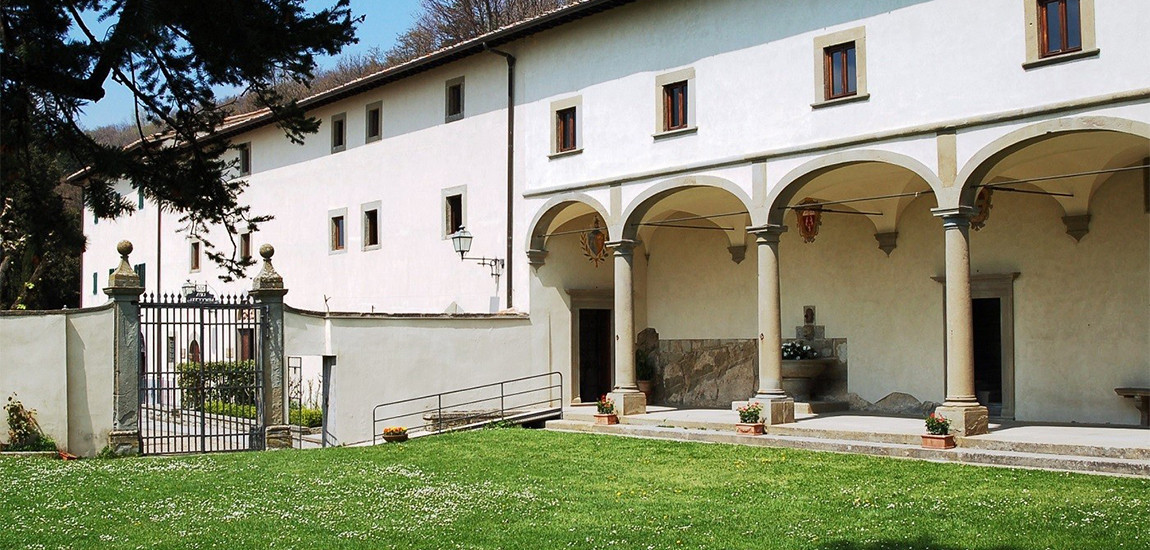
Excursions out of Florence - The Sanctuary of Madonna delle Grazie al Sasso
At 20 km north of Florence, in the
beautiful Protected Natural Area of Monte
Giovi (992 m), in the valley of the Sieci stream, in a forest of chestnut,
pine, ash and oak trees, we find, isolated and in a panoramic position at 565
m., the Sanctuary of the Madonna delle Grazie al Sasso di Santa Brigida. The
place is very interesting from a natural and landscape point of view.
There was a settlement there of hermits and a
tabernacle erected by Sant’Andrea Scotus (actually Irish), who lived here until
829 AD, when he became bishop of Fiesole. Sant'Andrea Scotus was considered
(erroneously, we believe, because there are many centuries between them) brother
of Saint Bridget of Ireland who, according to the legend, was miraculously
transported here when his brother was about to die and settled close to today’s
village of Santa Brigida, which takes her name. In reality it seems that in the
400s A.D. there was already a settlement
of women followers of Santa Brigida who then took the Benedictine rule and from
which it seems the name of the village derives.
In July 1484, the Madonna with Jesus in her arms appeared to two shepherdesses
who were praying in front of the ancient tabernacle for their seriously ill
father, who was immediately healed by the Madonna. Then in August the
Madonna appeared again to several hundred people and the place immediately
became a destination for pilgrimages from all over the region, as evidenced by
the quantity of ex-voto for graces received.
The sanctuary was built in 1490 and then enlarged over the centuries, incorporating
a medieval oratory, the caves and the sources of the hermits, the stone of the
apparition of the Virgin and the tabernacle of Sant'Andrea Scotus. The image of
the Madonna, from the Giotto school, was also carried in procession to Florence
on the occasion of earthquakes, famines, plagues to invoke grace. On the second
Sunday of May took place the main celebration. The entire population of the area
participated and the day ended with a gigantic lunch for which a mare was
sacrificed and eaten. You might think that this tradition refers to an ancient pagan rite because it is proven that the area was frequented by the Romans and even earlier by the Etruscans.
The
church has a particular two-storey structure. On ground one is located the main with underneath the stone where, according to the legend, the
shepherdesses saw the Madonna, two wooden statues depicting one of the
shepherdesses and her father, and three important paintings: a Madonna by Jacopo Vignali (1621), the Transit of San Giuseppe and Sant'Isidoro by unknown artists and a Crucifixion by Benedetto Velio, all from
the 17th century. On the underground floor, also known as the Chapel of the Apparitions we find the ancient tabernacle, the Giotto-school image of the Madonna, the remains
of the medieval oratory, the sources and the cells of the hermits, including
the cell of Sant'Andrea Scotus.
To reach the sanctuary take the Faentina road to the north, at the
Vetta alle Croci Pass to the right for Santa Brigida.



